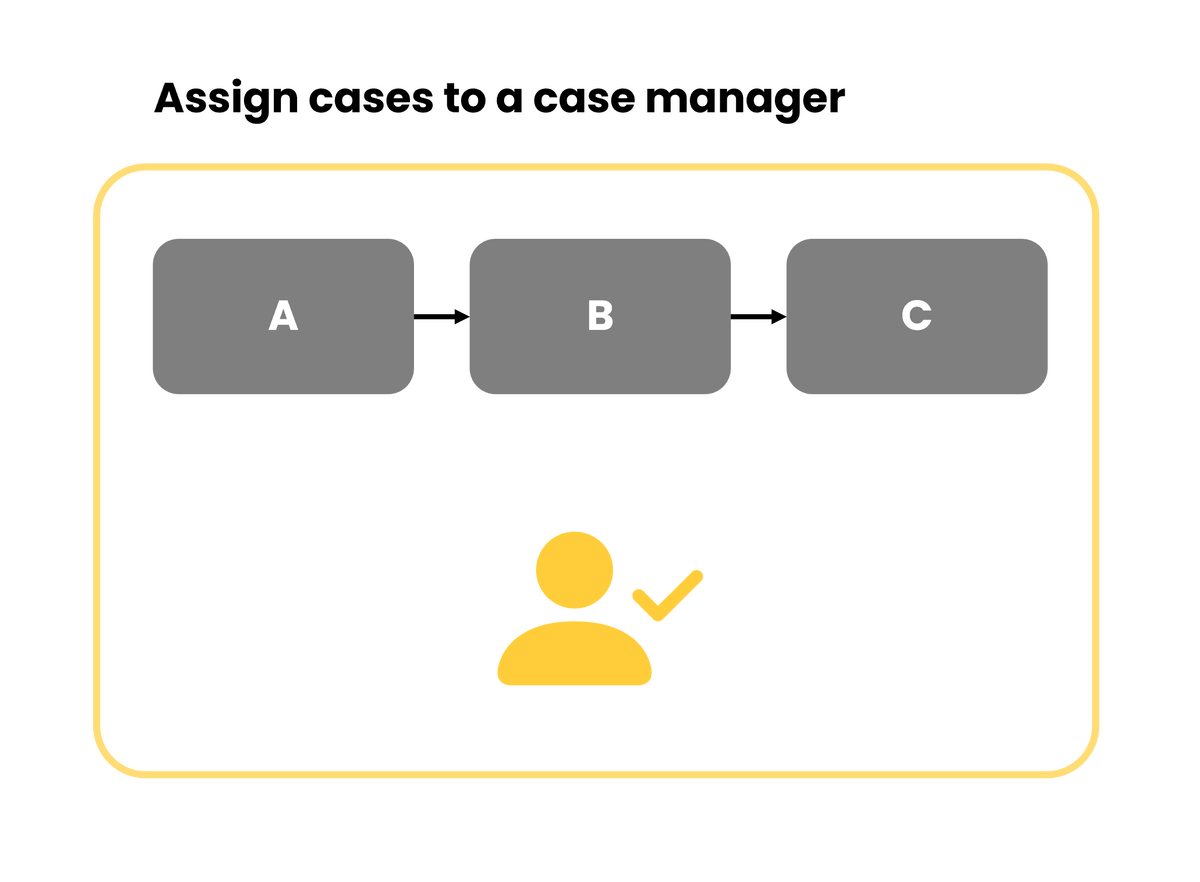Assign cases
Let workers perform as many steps as possible for single cases
Reijers, H., & Liman Mansar, S. (2005). Best practices in business process redesign: an overview and qualitative evaluation of successful redesign heuristics. Omega, 33(4)
Description
A case manager plays a crucial role in overseeing a case, but they are not necessarily involved in carrying out the entire workflow. In order to ensure efficient coordination, the process of assigning cases can be utilized. This involves selecting a resource who has previously worked on the case and is capable of performing the necessary tasks. Rather confusingly, this person is sometimes also referred to as case manager.
This pattern is different from the case manager pattern.

Performance considerations
The obvious advantage of the rule is that this person will get acquainted with the case and will need less set-up time. An additional benefit may be that the quality of service is increased. On the negative side, the flexibility of resource allocation is seriously reduced. A case may experience substantial queue time when its "case manager" is not available.
Share this pattern
Enjoy these
Foundational free Patterns
Buffer external information and subscribe to updates
Let workers perform as many steps as possible for single cases
Empower workers for more decision-making authority
Establish standardized interfaces
Consider a standardized interface with customers and partners
Order knock-outs by least effort and highest termination probability first.
Avoid shared responsibilities for tasks by people from different functional units
Offer a green alternative with the same outcome, utilizing different steps, resources, or partners, while retaining the previous existing process
Replace underlying resources with eco-friendly alternatives
Explore whether a process can easily be used for additional products or services
Share this
Connected to
Assign a responsible individual for handling each case type
Establish a case-based mindset
Remove batch-processing and periodic activities from your business process
Determine whether activities are related to the same type of case and, if necessary, distinguish new business processes
Form cross-department teams for end-to-end case handling.